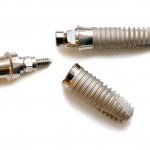
The use of dental implants continues to increase, and studies suggest that they have good survival rates. However, an adequate level of alveolar bone is required to place standard length dental implants without bone augmentation procedures. As a result, short (≤8 mm) or extra- short (≤6 mm) implants has been used for oral rehabilitation.
The aim of this review was to compare the survival rate, marginal bone loss and clinical complications between extra-short implants (≤6 mm) and 6-mm-longer implants.
Methods
Searches were conducted in the Medline/PubMed, Scopus, Web of Science and Directory of Open Access Journals (DOAJ). This was supplements by manual searches of the journals; Journal of Periodontology, International Journal of Periodontics & Restorative Dentistry, Clinical Oral Implant Research, Journal of Clinical Periodontology, European Journal of Oral Implantology and The International Journal of Oral & Maxillofacial Implants. Randomised controlled trials (RCTs) comparing extra- or super-short (≤6 mm) implants versus longer implants (>6 mm) were considered. Study selection, data extraction and risk of bias assessment was undertaken independently by two reviewers using the Cochrane risk of bias tool. Disagreements were resolved by a third reviewer. The primary outcomes were cumulative implant survival rates (%) and peri-implant marginal bone loss (MBL [mm]).
Results
- 17 RCTs involving a total of 956 patients (1779 implants, 900 >6 mm and 879 (≤6 mm) were included.
- Average follow up period was 3.88 years (range 1-8 years).
- Reported drop out was 95 patients but this was not reported in 5 studies.
- 7 studies were considered to have a high risk of bias and 10 a moderate risk.
- 10 RCTs reported higher survival rates for the control group (>6 mm).
- Overall mean survival rate for extra-short group = 93.12% and 95.9% for the control group (>6 mm).
- Overall mean MBL was -70 mm (±0.39 mm) for extra-short group compared to -0.64 mm (-0.52 mm) for the control group (>6 mm).
Conclusions
The authors concluded: –
Within the limitations of this study and focusing on the variables analysed, the results indicated that SR of extra-short implants was similar to 6-mm-longer implants. In contrast, MBL was lower, and there were fewer biological complications for the extra-short group, suggesting predictable results as observed for longer implants. Therefore, the main cause of complication associated with longer implants in the studies evaluated was matched to augmentation procedures. Future research is suggested evaluating extra-short implants within a more significant follow-up period.
Comments
The authors have searched a range of databases supplemented by manual searches in a number of relevant journals. 17 RCTs were included which is similar to the number identified in an earlier review by Chen et al (Dental Elf – 5th Apr 2019) which compared extra-short (≤6 mm) implants with (≥10 mm) implants and had similar findings overall, in that there was no difference in survival rate and MBL between the two implant types. However, It is worth highlighting that 5 of the studies included in this review (29%) did not report on dropouts which has implications for estimates of implant survival (defined as ‘implants remaining in situ during the observation period, irrespective of their conditions). In addition, the included studies are relatively small, the largest involving 85 patients, and none of them were assessed as being at low risk of bias and only one study had a follow up period of more than 5 years. Consequently, the results should be interpreted cautiously and do not relate to the longer term. Hig quality , well-reported prospective studies using common outcome reporting methods are needed to provide better information on longer term outcomes.
Links
Primary Paper
Fernandes G, Costa B, Trindade HF, Castilho RM, Fernandes J. Comparative analysis between extra-short implants (≤6 mm) and 6 mm-longer implants: a meta-analysis of randomized controlled trial. Aust Dent J. 2022 Jan 30. doi: 10.1111/adj.12900. Epub ahead of print. PMID: 35094419.
Other references
Dental Elf – 4th Dec 2020
Dental implants: Long or short with bone augmentation in the posterior jaw?
Dental Elf – 5th Apr 2019
Dental Elf – 3rd Jun 2016
Short dental implants show similar outcomes to standard implants in short term
Dental Elf – Short dental implant blogs
